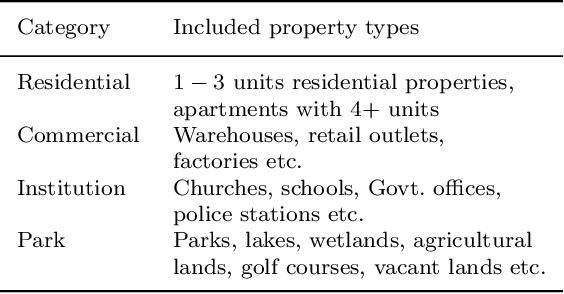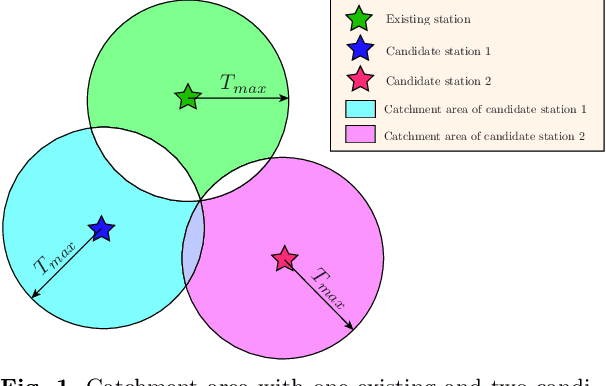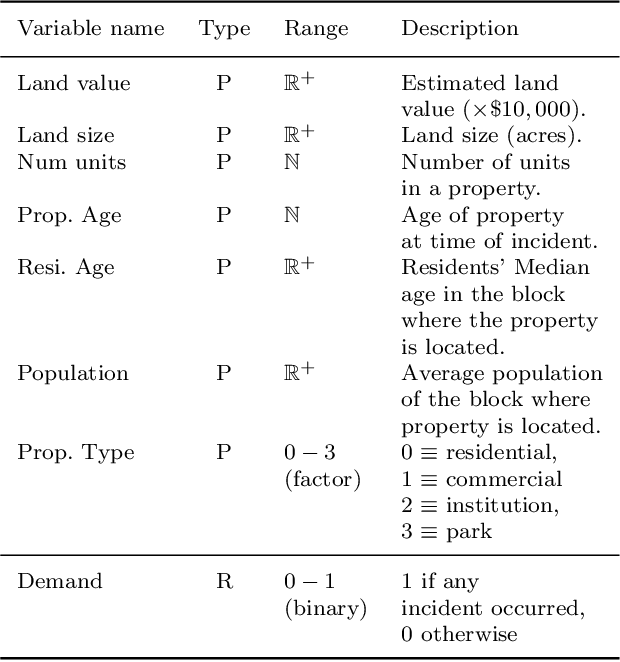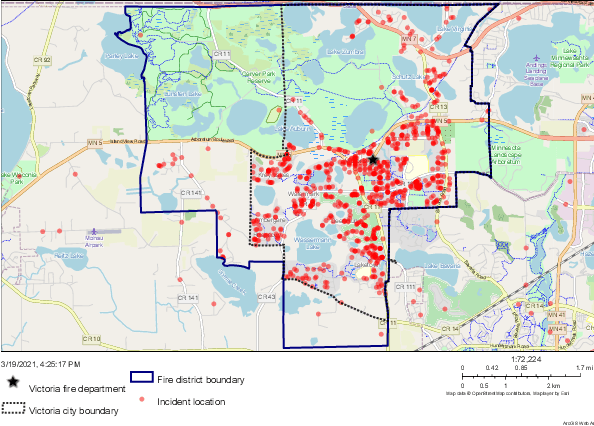Urban Fire Station Location Planning: A Systematic Approach using Predicted Demand and Service Quality Index
Paper and Code
Sep 05, 2021



In this article, we propose a systematic approach for fire station location planning. We develop a machine learning model, based on Random Forest, for demand prediction and utilize the model further to define a generalized index to measure quality of fire service in urban settings. Our model is built upon spatial data collected from multiple different sources. Efficacy of proper facility planning depends on choice of candidates where fire stations can be located along with existing stations, if any. Also, the travel time from these candidates to demand locations need to be taken care of to maintain fire safety standard. Here, we propose a travel time based clustering technique to identify suitable candidates. Finally, we develop an optimization problem to select best locations to install new fire stations. Our optimization problem is built upon maximum coverage problem, based on integer programming. We present a detailed experimental study of our proposed approach in collaboration with city of Victoria Fire Department, MN, USA. Our demand prediction model achieves true positive rate of 70% and false positive rate of 22% approximately. We aid Victoria Fire Department to select a location for a new fire station using our approach. We present detailed results on improvement statistics by locating a new facility, as suggested by our methodology, in the city of Victoria.
 Add to Chrome
Add to Chrome Add to Firefox
Add to Firefox Add to Edge
Add to Edge